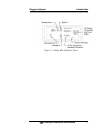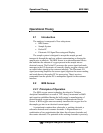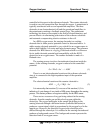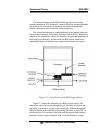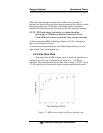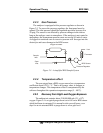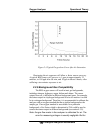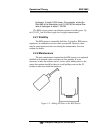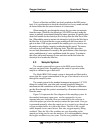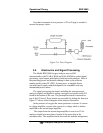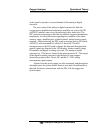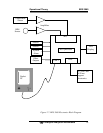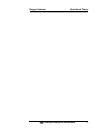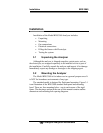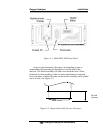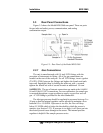
Oxygen Analyzer Operational Theory
Teledyne Analytical Instruments 25
There is a Max line and Min Line clearly marked on the BDS sensor
body. It is a good practice to check the electrolyte level every month and add
de-ionized water into the sensor whenever it is convenient.
When running dry gas through the sensor, the gas carries out moisture
from the sensor. Therefore, the electrolyte (10% KOH in water) inside the
sensor is gradually concentrated during the sensor operation. It typically takes
about four months for the electrolyte level to drop from the Max line to Min
line. When adding water to increase the electrolyte level from the Min line to
the Max line, it is typical that the oxygen reading will drift down about 10
ppb in an hour. If the oxygen content in the sample gas is very close to zero,
the analyzer may display a negative reading during this period. The sensor
will recover by itself during the following week. This drift-down then
recover-back phenomenon is caused by the quick dilution of the electrolyte
and re-establishment of a new equilibrium inside the sensor. To minimize
this effect, add a small amount of water each time and do this before the
electrolyte level reaches the Min line.
2.3 Sample System
The sample system delivers gases to the BDS sensor from the
analyzer rear panel inlet. Depending on the mode of operation either
sample or calibration gas is delivered.
The Model BDS 3960 sample system is designed and fabricated to
ensure that the oxygen concentration of the gas is not altered as it travels
through the sample system.
The sample system for the standard instrument incorporates 1/4" VCR
fittings for sample inlet, span inlet, and vent and Swagelock fittings for
instrument air tube connections at the rear panel. The sample or calibration
gas that flows through the system is monitored by a flowmeter downstream
from the sensor.
Figure 2-6 represents the flow diagram of the sampling system. In
the standard instrument, span gases can be connected to its own
separate inlet port. Solenoid valves are controlled by the software to
switch the proper gas when the analyzer enters the span mode. Zero gas
is generated internally when the sample gas is re-routed to go through an
oxygen scrubber before it is fed to the sensor. The life of the oxygen
sensor depends in two main factors: flow rate, oxygen impurity being
scrubbed. Thus, the life of the scrubber can vary depending on the
sample gas being used to zero the analyzer. It is recommended to change
the oxygen scrubber every two years. Use this as a guideline only.



